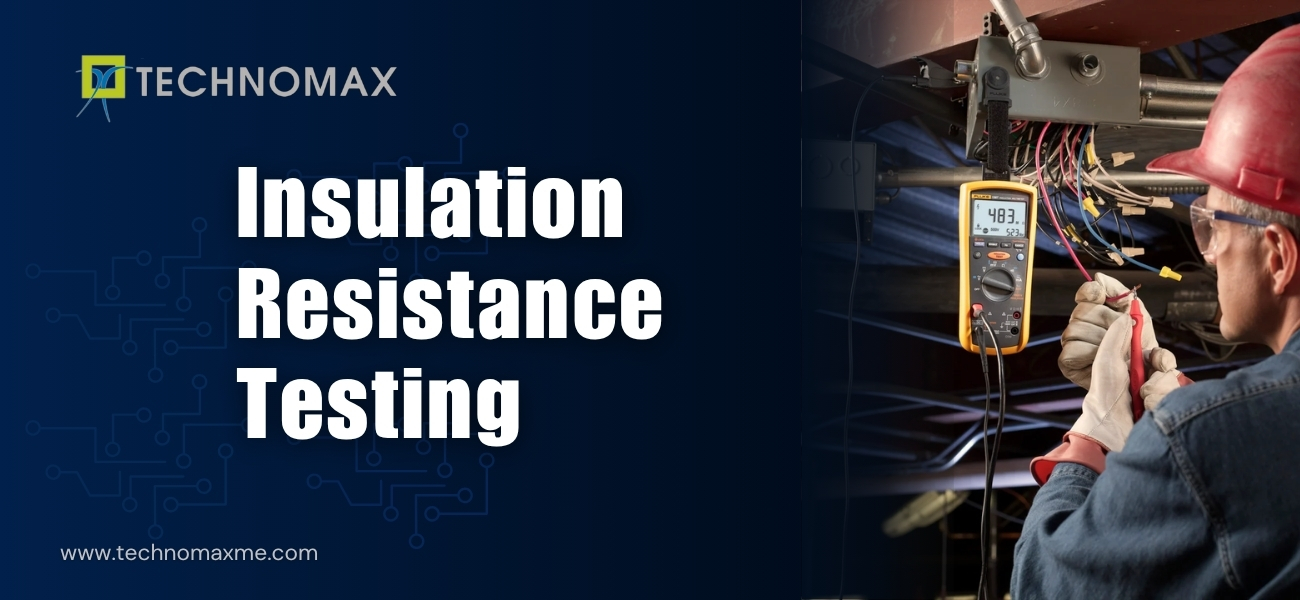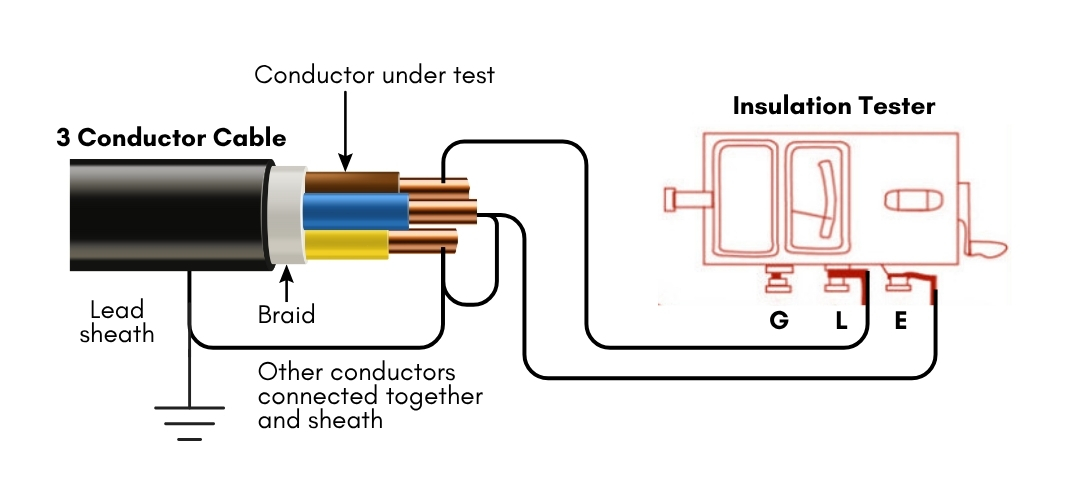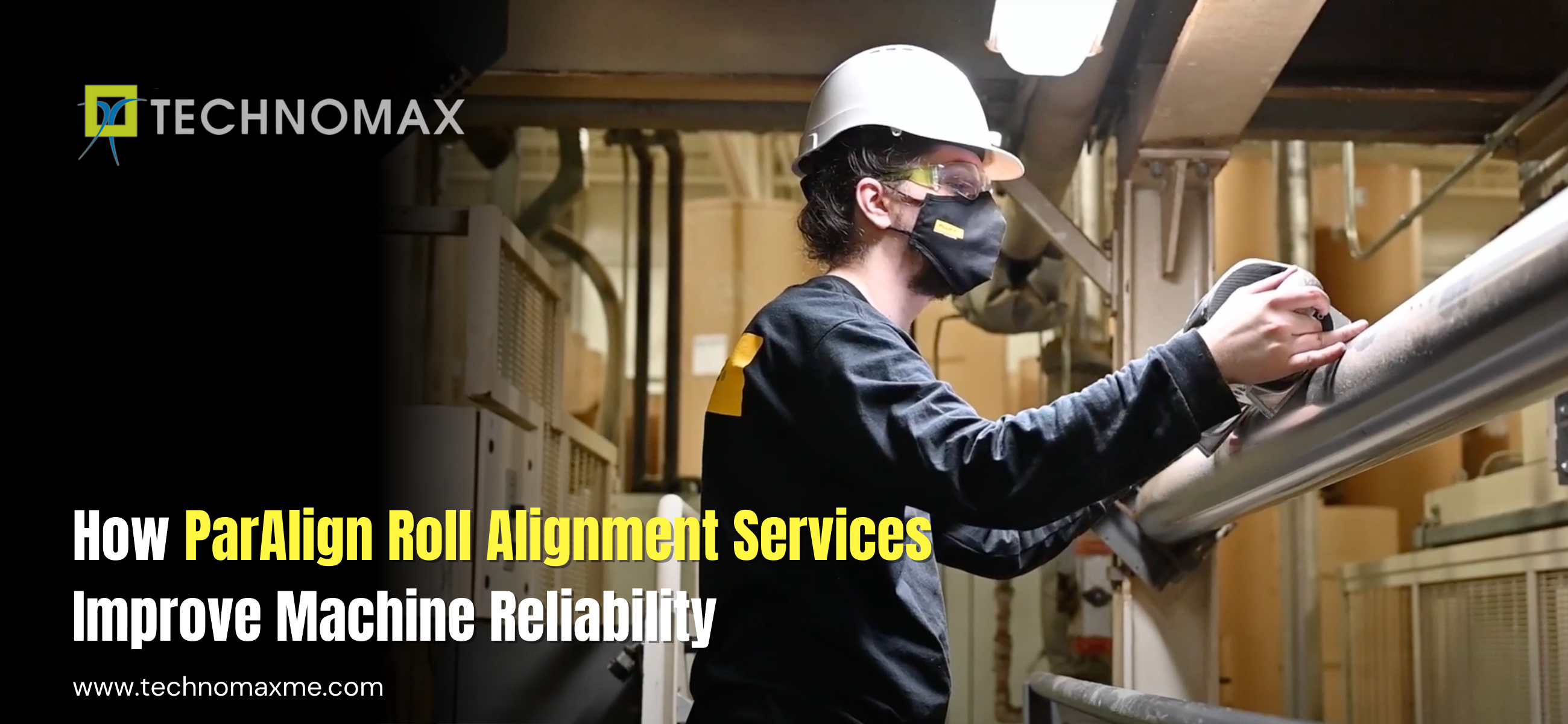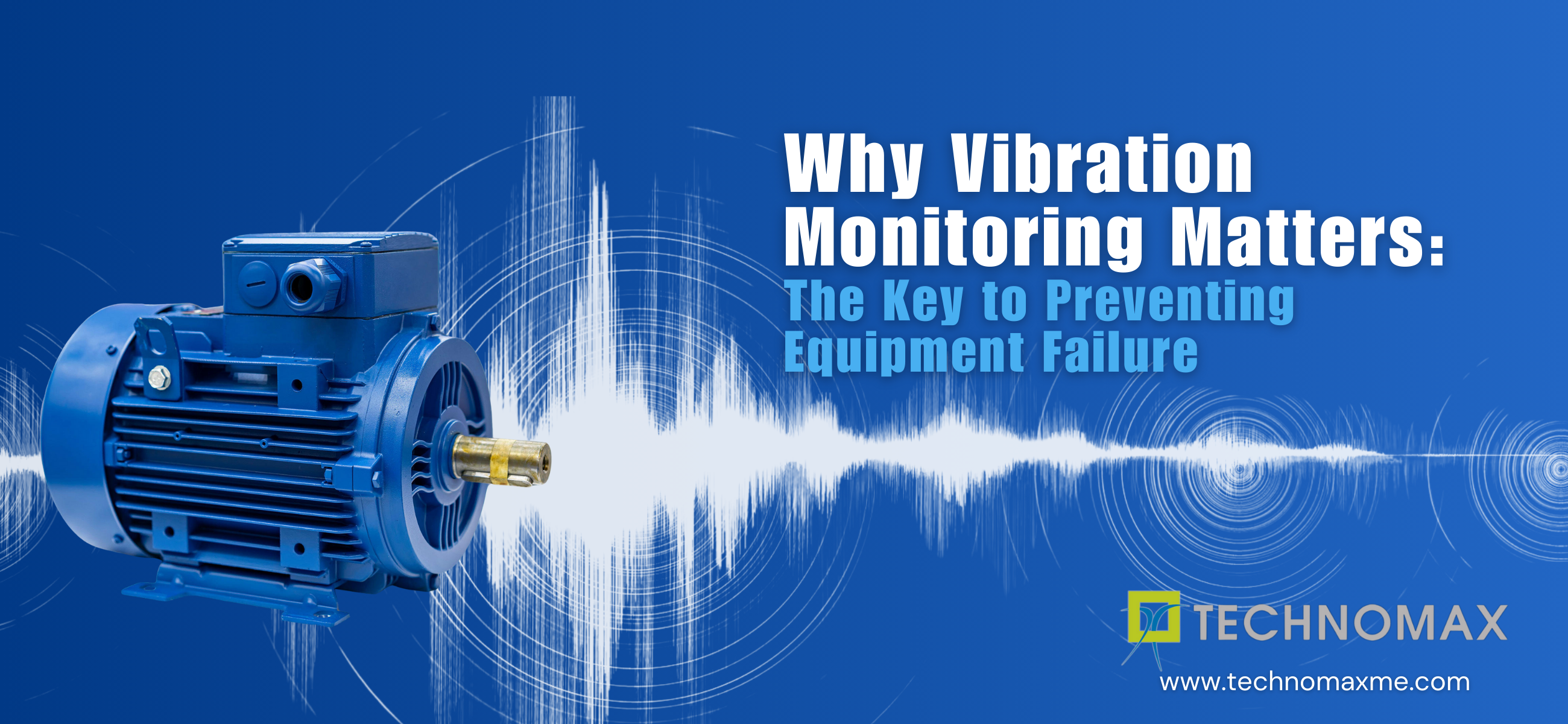
Insulation Resistance (IR) Testing in UAE: Purpose, Procedure & Benefits Explained
Insulation Resistance (IR) Testing : Purpose, Procedure & Benefits Explained
Insulation Resistance (IR) testing is a critical procedure under electrical safety standards to assess the quality and integrity of insulation materials. The primary purpose of IR testing is to detect premature insulation deterioration, which, if left unchecked, can lead to equipment failure, short circuits, flash arcing, overheating, fire, and electrocution.

IR testing offers several benefits, including early detection of insulation degradation, prevention of unexpected breakdowns, improved overall electrical safety, and extended equipment life. It is widely applied across various electrical systems to evaluate the insulation resistance of cables, electrical installations, airport runway lighting systems, alert monitoring systems, motors, generators, and a wide range of industrial and building appliances.
At Technomax, our team blends expert knowledge with advanced tools to deliver precise insulation resistance testing, ensuring even complex installations are evaluated accurately and enabling informed maintenance decisions.
Let’s take a closer look at insulation resistance testing—its key features, testing procedure, and how it plays a vital role in preventive maintenance and electrical safety.
What is Insulation Resistance (IR) Testing?
An insulation resistance test is conducted to determine the insulation resistance of an electric cable or system using an insulation tester or Megohmeter- hence, it is commonly referred to as the Megger test. It is a crucial diagnostic procedure to evaluate the effectiveness of insulation in electrical systems.
A higher resistance indicates good insulation, while a lower resistance value may indicate moisture ingress, surface contamination, aging, or damage in the insulation material. This test helps in identifying weak points in the insulation before they lead to operational failures or safety hazards.
Why Insulation Resistance Test is Done?
Insulation provided to electric units starts to deteriorate when exposed to harsh environmental conditions like extreme temperature, humidity, chemical contamination, bending or flexing, ultraviolet light (UV) exposure, or due to aging over time. These factors introduce various stresses within the insulation material, leading to reduced performance and eventual failure.
The major types of stresses include:
- Electrical Stresses – caused by overvoltage and under voltage
- Mechanical Stresses – due to vibration, flexing, and frequent operation cycles.
- Chemical Stresses – from oils, corrosive vapors, or exposure to industrial contaminants.
- Thermal Stresses – from repeated heating and cooling, or operation at extreme temperatures.
- Material Stresses – resulting from the natural aging of insulation or poor-quality materials.
Over time, these stresses reduce the electrical resistivity of the insulation, making it prone to leakage currents. To detect such deterioration early, an insulation resistance test is conducted, where the leakage current is detected and the corresponding resistance is calculated. This allows timely corrective actions before failure occurs.
Criteria for Measuring Insulation Resistance Values in UAE
The insulation resistance (IR) value is a key indicator used to assess the condition of insulating materials in electrical systems. It is measured in ohms (Ω), typically using a 500 V DC insulation tester.
According to UAE regulations, such as those set by DEWA (Dubai Electricity and Water Authority), the minimum acceptable insulation resistance for any circuit operating at 50 V or above is 1 MΩ (1 megohm = 1 million ohms). This uniform standard is more stringent than some international standards, ensuring a higher level of safety and reliability in electrical installations. The requirement helps prevent leakage currents and enhances the overall insulation integrity of the system. Lets analyse how insulation resistance is measured.
How to Check Insulation Resistance?
In insulation resistance testing, an IR tester is used to apply a high DC voltage across the insulation material, and the resulting current flow is measured. Based on this current, the device calculates the insulation resistance.
The resistance is calculated by following the principle of Ohm’s Law, which states:
R = V / I
Where: R is the resistance (in ohms, Ω), V is the applied voltage (in volts, V), and I is the resulting current (in amperes, A).
The test voltage range is usually between 100 VDC to 1000 VDC, which is suitable for insulation systems but not advised for sensitive electronic components.
So, by knowing the voltage applied and the current measured, the IR tester determines the insulation resistance value accurately.
The IR values determined are high, so they are represented in kilohms (kΩ), megohms (MΩ), gigaohms (GΩ), and in some instruments, even teraohms (TΩ).
A high IR value indicates good insulation, while a low IR value suggests degraded or poor insulation.
PAT Testing For Insulation Resistance
Portable Appliance Testing (PAT) is a method of electrical safety testing used to test portable or movable electrical equipment using a PAT tester. A PAT test involves two main tests.
- Insulation resistance test
- Earth continuity test
It also includes other tests like visual inspection and a polarity test.
The PAT testing for insulation resistance considers a value of 1 megohms for every 1000V of intended use as safe. For example, if an insulated conductor is rated for 5000V, its insulation resistance should exceed 5 megohms. During a PAT test, this value appears on the tester’s screen, and if it meets or exceeds the threshold, the insulation test is considered passed.
Insulation Resistance Testing Procedure
Insulation resistance (IR) Testing can be conducted as a standalone diagnostic using a Megger or as a part of a PAT procedure.
In larger electrical systems, IR testing is performed using Meggers due to their ability to handle higher voltages and provide accurate readings.
The main steps in the insulation resistance testing procedure involve:
- Preparing the circuit
- Setting up the insulation tester (Megger device)
- Connecting the testing leads - Live, Neutral, and Earth Connections
- Conducting the test
- Recording and interpreting the results: Compare with standard acceptance values (eg, greater than 1 MΩ in domestic wiring)
During IR testing, the external temperature and humidity significantly affect IR values. For every 10°C decrease in temperature, the IR value doubles. For every 10°C increase, the IR value drops sharply. A stable or increasing megger reading suggests good insulation. If the reading rises and then drops, it may indicate insulation breakdown.
Looking for insulation resistance testing in UAE and Middle East, then partner with Technomax. Our expert technicians will supports you with reliable services.
Types of Insulation Resistance Tests
The two common methods used for insulation resistance testing are:
1. Short-Time or Spot-Reading Test
A short-time insulation resistance test involves applying voltage using a Megger device for a fixed short duration to determine the IR value. Since the resistance increases over time and varies with temperature, humidity, and condition of the insulation, a single reading is taken at a specific point on the rising resistance curve.
Short-time insulation resistance test is a quick and easy method that can be used for testing equipment with small capacitance and short wiring runs.
2. Time-Resistance Method
The time-resistance insulation resistance test method involves testing the IR value of a given insulation material by applying voltage over a period of time. This test value is dependent on the absorption characteristics of the insulation, wherein dry and clean insulation shows a steady rise in resistance, while contaminated or moist conditions show slow or no increase. Hence, this method is also called as absorption test.
Time-resistance IR testing is not dependent on the temperature and equipment size. You can, therefore, use this method to test and compare several motors regardless of their horsepower ratings.
Motor Insulation Resistance Testing
IR testing of electric motors assesses the insulation resistance between the windings and the frame. A general guideline when measuring motor insulation resistance is:
| Insulation Resistance (IR) | Condition |
| ≤ 2 MΩ | Bad |
| 2-5 MΩ | Critical |
| 5-10 MΩ | Suspect |
| 10-50 MΩ | Good |
| >50 MΩ | Excellent |
Tools Used for Insulation Resistance Testing
Insulation resistance testing is performed using high-voltage devices designed to measure the insulation resistance in megohms.
The main tools used in insulation resistance testing include:
- Meghommeter or Insulation Tester, or Megger
- PAT Tester (Portable Appliance Tester)
Distinction Between Dielectric Strength Test and Insulation Resistance (IR) Test
The dielectric strength test, also known as “breakdown testing,” evaluates an insulation material’s capability to endure a short-to-medium duration high-voltage surge without experiencing sparkover. Such voltage surges can result from events like lightning strikes or electrical faults in power transmission lines. This test is primarily conducted to verify compliance with standards related to leakage paths and clearance distances. Typically performed using an AC voltage—though DC can also be used—it requires a hipot tester, and the outcome is usually presented in kilovolts (kV). Since the test can potentially damage equipment in case of a fault, it is generally reserved for type testing of new or refurbished devices.
On the other hand, insulation resistance testing is a non-destructive method under standard conditions. It involves applying a lower DC voltage compared to dielectric testing and provides results in kilohms (kΩ), megohms (MΩ), gigohms (GΩ), or teraohms (TΩ). This resistance value reflects the condition of insulation between conductors. Because of its non-invasive nature, it is ideal for assessing the aging of insulation over time and during routine maintenance. This test is carried out using an insulation resistance tester, commonly referred to as a megohmmeter.
Factors Influencing Insulation Resistance Values:
- Capacitance Charging Current: This current is initially high but decreases once the insulation is fully charged, similar to how water gushes out strongly when a hose is first turned on and then stabilizes.
- Absorption Current: Like the charging current, this also starts at a higher level and gradually reduces, as explained in the Time-Resistance testing method.
- Conduction or Leakage Current: A low, steady current that travels either through or along the surface of the insulation material.
Safety Precautions for Insulation Resistance Testing:
- Ensure that all equipment being tested is completely disconnected and isolated from any power source.
- After the test, the equipment should be discharged (either shorted or grounded) for a period equal to or longer than the duration of the applied voltage to ensure user safety.
- Never operate a Megger in areas with explosive or flammable atmospheres.
- All switches should be locked or tagged out, and cable ends must be clearly marked for safety.
- While performing earth insulation tests, ensure the far end of the cable isn’t in contact with any surface, which might lead to false results indicating poor insulation.
- Confirm that all test connections are secure and properly tightened.
- Disconnect cable ends from the power supply and prevent accidental contact with live parts or grounding.
- Install safety barriers with visible warning signs and maintain open communication among all testing personnel.
Insulation Resistance (IR) Testing with Technomax
At Technomax, we specialize in delivering comprehensive insulation resistance testing services to help industries ensure electrical safety, system reliability, and compliance with international standards. Our team of certified professionals uses calibrated Megohmmeters and advanced testing protocols to detect insulation failures before they lead to costly downtime or hazards.
Whether you're commissioning new equipment, conducting preventive maintenance, or troubleshooting faults, Technomax provides accurate diagnostics and actionable insights.
Partner with us to keep your electrical systems safe, efficient, and future-ready.
Contact Technomax today to schedule your insulation resistance testing in UAE and Middle East or to learn more about our complete range of electrical inspection services
Learn More About Our Services

Recent Blogs

Get Started Now!
It takes less than a minute of your time. Or you may simply call +971 2 555 1 783






